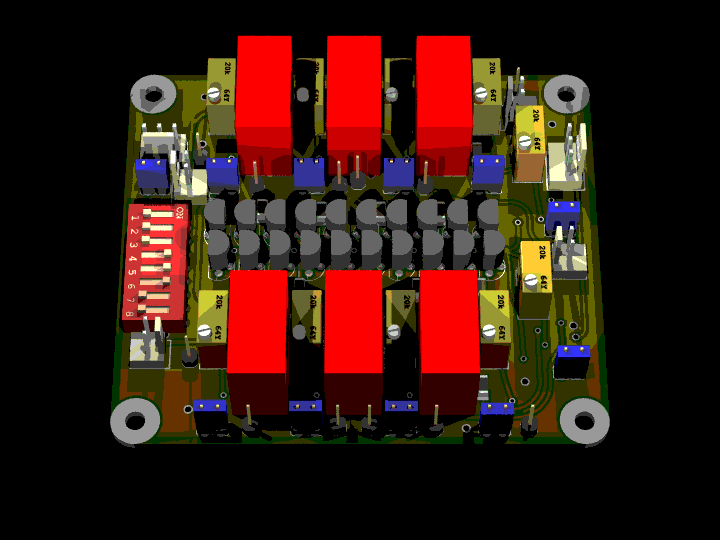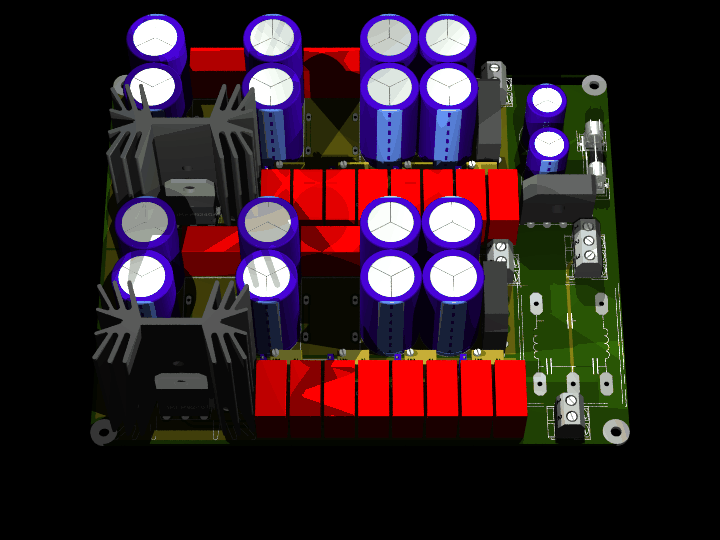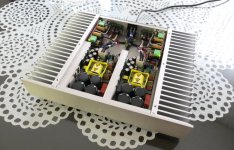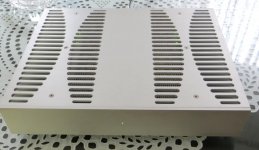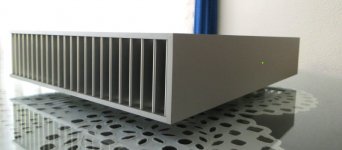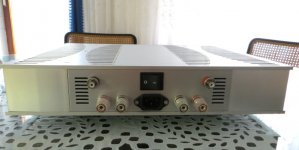Might be a difference. Don't know if it will be a just discernible audible difference, or a measurable difference, or both. Or maybe no difference................ Should be a big difference!
Bre τεμπελογατα (Lazy Cat in Greek, i have 9 of them in my yardIt means this is fully differential (bridge) impedance buffer stage, having 0 dB voltage gain. It accepts balanced signal from any low Z high voltage preamplifier.

OK, in a three stage audio power amplifier the 3rd stage from drivers up to output transistors is the 0dB gain stage, is the buffering stage of the voltage gain stage from the low Z output load.
Unless this amplifier of hansenni does not includes the two first stages, i.e. the input LTP and the VAS and... indeed it looks like this from the pictures. I can't see any small signal transistor.
I know that you are very close to Papa
Last edited:
Hello, everyone, for the first time sent a message, this is my DIY amplifier of 0dB
Looks very impressive!
The best DIY amplifiers are coming out of Taiwan
Difference
Oh well, keeps me busy and it certainly doesn't hurt. The tip was given to me by The guys from Pink Faun. I guess(and hope) they know what the're talking about
and it certainly doesn't hurt. The tip was given to me by The guys from Pink Faun. I guess(and hope) they know what the're talking about 
Anyway, looks cleaner an more organized.
Might be a difference. Don't know if it will be a just discernible audible difference, or a measurable difference, or both. Or maybe no difference.
Oh well, keeps me busy
Anyway, looks cleaner an more organized.
Hi Andrew, glad to meet you againLooks very impressive!
The best DIY amplifiers are coming out of Taiwan
I only can say that:
These fully differential designs (from input to output, without conversion of balanced input signal to single ended) can give amazing results.
For example, with just +/-38Vdc supply rails per module (total four amp modules bridged per two) and a circuit implemented at whole with original trustable ONsemi BJT transistors (no need for Toshiba or Sanyo or Sanken small, medium, high power e.g. 5 pairs DH4411-D45H11 output transistors per amp) you could easily obtain an output power of 2 X 140 Wrms @ 8Ohms (20 - 20,000 Hz +/-0.1dB) with just 0.007% THD, a bandwidth close to 750KHz (-3dB) and a rise time of 0.5μsec (-68V to +68V) or a slew rate close to 250V/μsec.
 You could also obtain a peak output power of 2 X 180Wrms.
You could also obtain a peak output power of 2 X 180Wrms.
Last edited:
Excellent work, congratulation.
According to which schematic is this?
Thimios.
Hello everyone, diyAudio Forum is a gathering place for the master, I'm just an amateur, please enlighten more!
Note: I use google translate Web language, please forgive me if improperly!
Thank you Thimios
Apparently is a true symmetrical design. There are four amplifiers total, bridged per two, to form the LEFT and RIGHT channel. And of course only balanced (XLR) inputs are offered of which the hot(+) is connected to the input of one amplifier and the cold(-) to the input of other. The speaker is connected across to the outputs of the 2 amplifiers, the pos. terminal at the output of "hot(+) amplifier" and the neg. terminal at the output of "cold(-) amplifier". There are some significant benefits offered by this topology.
Hi FOTIOS Thank you! Your analysis is correct!
Operating voltage + / - 48V, power 1400W each transformer
This 0dB no voltage amplification circuit
It means this is fully differential (bridge) impedance buffer stage, having 0 dB voltage gain. It accepts balanced signal from any low Z high voltage preamplifier.
Lazy Cat Thank you! Your analysis is correct !
Looks very impressive!
The best DIY amplifiers are coming out of Taiwan
Thank Taiwanese friend
Last edited:
Bre τεμπελογατα (Lazy Cat in Greek, i have 9 of them in my yard) say it with... common terms, understandable from... terrestrials. Don't put me in... analyses with so hot weather
OK, in a three stage audio power amplifier the 3rd stage from drivers up to output transistors is the 0dB gain stage, is the buffering stage of the voltage gain stage from the low Z output load.
Unless this amplifier of hansenni does not includes the two first stages, i.e. the input LTP and the VAS and... indeed it looks like this from the pictures. I can't see any small signal transistor.
I know that you are very close to Papaand well informed about his super symmetrical topology. I'd like to put my fingers into this honey

Please refer to the circuit diagram
An externally hosted image should be here but it was not working when we last tested it.
First One modules transformed into VSSA chassis. It is enough compact?
Simplicity and technological sense, is great work!
Switching Power Supply sound performance then?
Hello, everyone, for the first time sent a message, this is my DIY amplifier of 0dB ...
Very tidy!! Well thought out, good board work, nice assembly with quality parts ... Totally.

... Four amps, two per channel, balanced Input, dual P-supplies ... !! Crazy like a fox !!
It would be nice to see how it looks on an analyzer ...
Last edited:
- Home
- Amplifiers
- Solid State
- Post your Solid State pics here
